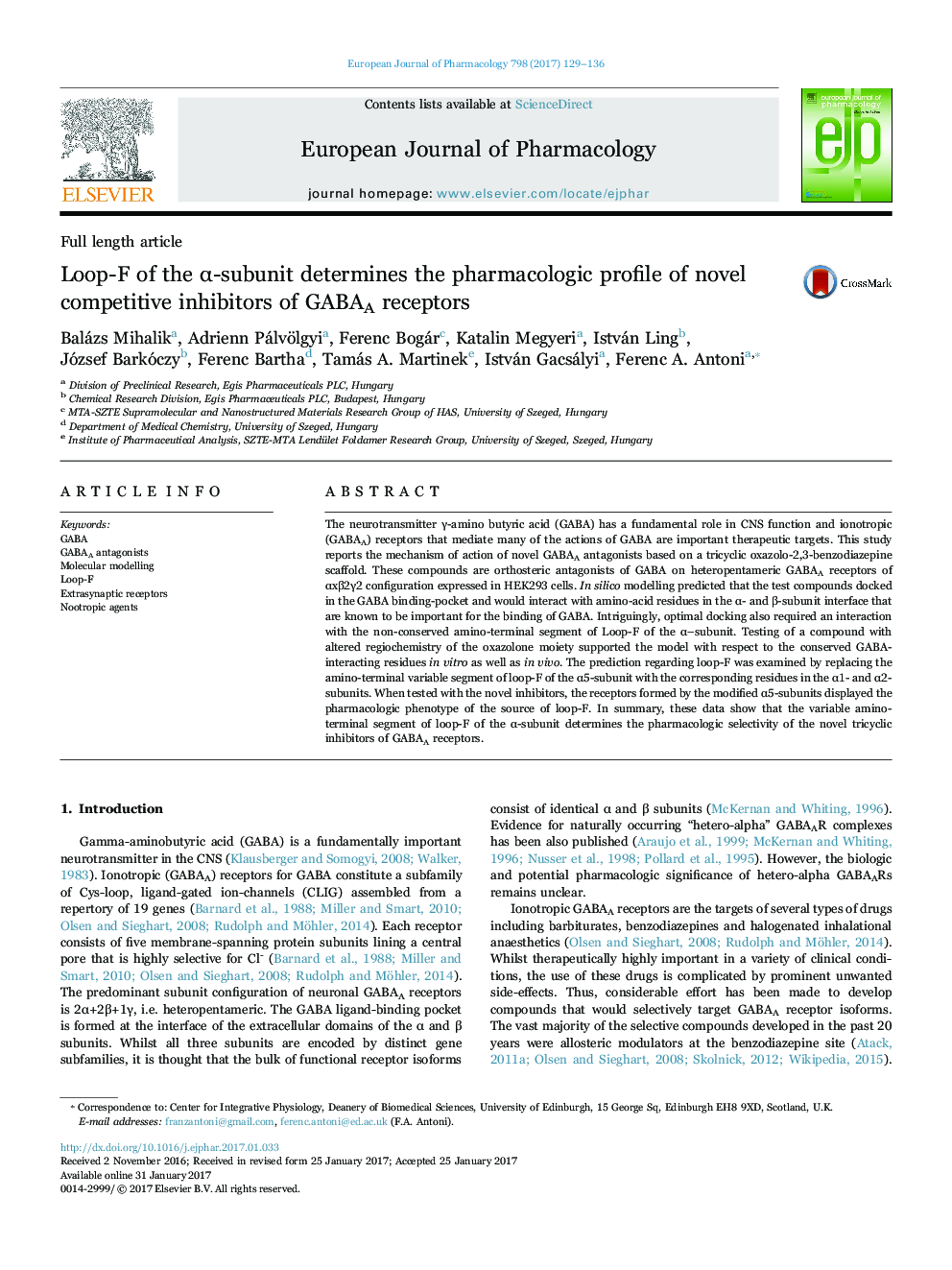| Article ID | Journal | Published Year | Pages | File Type |
|---|---|---|---|---|
| 5554784 | European Journal of Pharmacology | 2017 | 8 Pages |
The neurotransmitter γ-amino butyric acid (GABA) has a fundamental role in CNS function and ionotropic (GABAA) receptors that mediate many of the actions of GABA are important therapeutic targets. This study reports the mechanism of action of novel GABAA antagonists based on a tricyclic oxazolo-2,3-benzodiazepine scaffold. These compounds are orthosteric antagonists of GABA on heteropentameric GABAA receptors of αxβ2γ2 configuration expressed in HEK293 cells. In silico modelling predicted that the test compounds docked in the GABA binding-pocket and would interact with amino-acid residues in the α- and β-subunit interface that are known to be important for the binding of GABA. Intriguingly, optimal docking also required an interaction with the non-conserved amino-terminal segment of Loop-F of the α-subunit. Testing of a compound with altered regiochemistry of the oxazolone moiety supported the model with respect to the conserved GABA-interacting residues in vitro as well as in vivo. The prediction regarding loop-F was examined by replacing the amino-terminal variable segment of loop-F of the α5-subunit with the corresponding residues in the α1- and α2-subunits. When tested with the novel inhibitors, the receptors formed by the modified α5-subunits displayed the pharmacologic phenotype of the source of loop-F. In summary, these data show that the variable amino-terminal segment of loop-F of the α-subunit determines the pharmacologic selectivity of the novel tricyclic inhibitors of GABAA receptors.
